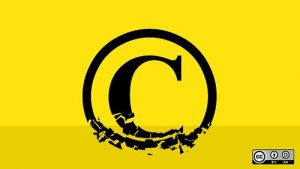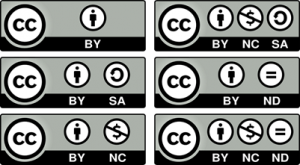This is a guest post from USF Copyright Librarian, LeEtta Schmidt.

Imagine that you are walking down the sidewalk in a suburban neighborhood. All around you are houses with big picture windows, gardens, bird baths, dogs, cars, and picket fences. You wouldn’t necessarily feel inclined to walk into someone’s garden and take an armful of oranges from their tree, nor would you walk off with someone else’s dog. You are in a public space, but you are surrounded by private property. This type of real world comparison has been made to the internet to explain intellectual property rights like copyright. When you are online traveling from website to website, you are in a public space, and you are surrounded by private property.
On our neighborhood street, you could freely enjoy the sight of that friendly dog, and maybe even be able to pet him. However, walking off with him and taking him to other neighborhoods could get you in some trouble. Similarly, on a neighborhood blog, you can freely enjoy seeing a photograph or video of that friendly dog. Maybe the video would come with an embed link that you could use to share the sight of him with others. Downloading or otherwise copying that video or photo and taking it to other websites could be copyright infringement and might get you in trouble. The ability to access material online doesn’t automatically mean that material is ‘open access’ or free to use, reuse, and remix.
When traveling online, you might also encounter publications and materials that have been shared as Open Access. Open Access (OA) materials, like much of what can be discovered on the internet, are digital, online, and free to access, however, OA materials are also free of most copyright and license restrictions. Authors of OA works apply open licenses, like Creative Commons licenses, to their work to advertise to their audience that certain protections of copyright law do not apply, like restrictions on copying, reuse, distribution. Creative Commons licenses can be used by any author, creator, or artist. Some research funding agencies like RCUK and NIH have required that the products of funded research be released Open Access and under a Creative Commons license with the goal of providing public access to research paid for by public funds. Similarly, some faculty and authors of educational material use Creative Commons licenses to release their educational content so it can be useful to wider audiences around the globe. These Open Educational Resources, or OERs, are also free to copy, distribute, reuse and remix.

How can you tell if what you are looking at online is OA or simply openly accessible? Often, the answer is in those Creative Commons licenses. When viewing a picture online or reading an article look for a badge or a link that starts with CC-BY. The letter combinations will tell you what kind of restrictions the author wants to retain over the use of their material, if any. The link will take you to a page with more in depth explanations of what the license means. Some websites or publishers may spell out the license, saying the material is released “under a Creative Commons Attribution” license. Journals may also use the open lock symbol to label specific articles as OA. Further explanation of the license used in this case will likely be on the journal’s about or policy pages. Other open license schema, like Open Data Commons, use similar badges or methods of identification to advertise that material is open to use.